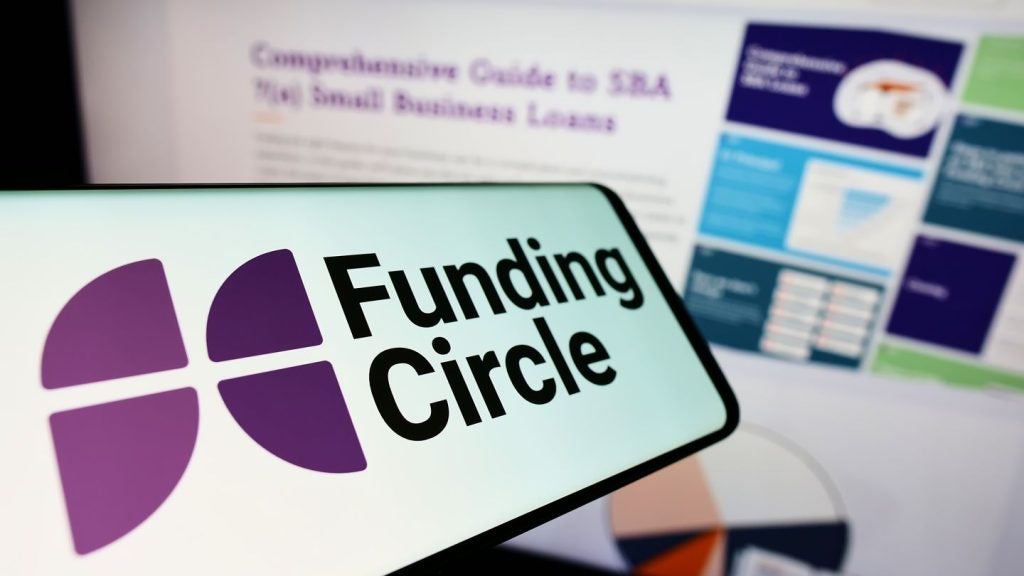
Asset-based Lending After Arena Television
Arena Television’s recent insolvency has been a shock for the asset finance industry which is asking itself how the outside broadcaster managed to fall through the safeguarding cracks that credit ratings and standard underwriting checks are supposed to provide. Alejandro Gonzalez looks at what steps are being considered to prevent ‘the next Arena’ from happening.
How did a relatively small UK SME, employing 63 full-time staff and operating in a £150m outside broadcasting (OB) market, manage to borrow almost 10 times its yearly turnover of c.£30m from 55 lenders over an unspecified number of years?
It may take a year or more before we know the answer to this question. Meanwhile, industry figures are asking, what needs to change?
“Arena Television is going to make a lot of people sit up and wonder: ‘how did that happen?’” says Roger Potgieter who runs the Finance & Leasing Association’s (FLA) fraud prevention training for its membership.
“It takes quite a gutsy individual to pull off a fraud on a scale of this size,” says Potgieter, whose training covers the many textbook frauds and scams he’s seen throughout his career – from concocting fake serial numbers, to funding non-existent kit and the multiple-financing of existing kit.
“What’s gone on at Arena seems to have pulled all these frauds together with several different types of fraud going on all in one go. It appears to be a very sophisticated, well planned and well-operated series of events,” says Potgieter, a partner in the financial services disputes and investigations team for Shoosmith LLP.
How well do you really know your competitors?
Access the most comprehensive Company Profiles on the market, powered by GlobalData. Save hours of research. Gain competitive edge.

Thank you!
Your download email will arrive shortly
Not ready to buy yet? Download a free sample
We are confident about the unique quality of our Company Profiles. However, we want you to make the most beneficial decision for your business, so we offer a free sample that you can download by submitting the below form
By GlobalDataA Sunday Times report in December said: “The scandal is thought to be one of the biggest alleged frauds in the history of asset-based lending.”
Potgieter, who has more than 20 years’ legal experience and who has been working in asset finance for the last 10 years, agrees. He describes the events at Arena as “certainly the biggest [asset finance] fraud, by some distance in terms of value, above anything else, I’ve seen before.”
He adds: “I would find it very hard to believe that certain third parties – brokers or suppliers – connected to Arena Television were not somehow involved in various aspects of the fraud.”
Indeed, this month the Times reported that Kroll, Arena’s court-appointed administrators, has identified Arena’s relationship with Sentinel Broadcast, a supplier of audio-visual equipment based in Hampshire, as “a key line of inquiry.”
Fraud prevention
In the last few years, says Potgieter, who tracks trends in fraud, asset finance fraud has been relatively stable compared to general finance fraud which has gone up.
“However, we mustn’t read too much into the last few years as a lot of fraud is more likely than not to remain undetected,” he says.
The asset finance sector should over the next six to 12 months “brace itself for more instances of fraud given the levels of forbearance and the size of government-backed Covid lending the industry has seen in the last 18 months,” he says.
As Covid lending unwinds it’s likely “we are in for a rise in fraud,” he says.
According to Cifas, a not-for-profit fraud prevention network composed of 600 member organisations across 14 sectors, the available figures suggest asset finance fraud remains relatively low.
“In 2020, Cifas members in the asset finance sector filed 2,365 cases of false applications. In total, 16,613 cases of false applications were filed to the National Fraud Database in 2020, so the asset finance sector accounted for 14% of filings of this case type,” a spokesperson says.
“During the first nine months of 2021, asset finance members filed 1,770 cases of false applications, which is 2% down on the same period in 2020.
“We’re forecasting fraudulent conduct levels in the asset finance sector to have remained fairly consistent for 2021.
“With many businesses struggling throughout the pandemic, some may have exaggerated their incomes on applications, and this may become a more prominent risk in the coming months,” the spokesperson says.
The FLA’s director of business finance and advocacy, Simon Goldie, says the trade body is currently engaged in several initiatives, one involves an early warning fraud prevention network for members hosted by IT provider Dun & Bradstreet.
The Business Risk Consortium was originally set up to share intelligence among the FLA’s anti-fraud personnel and today includes non-FLA members, who make up about half of the 60-member community of mostly UK banks and larger non-bank funders.
“We operate on a ‘give to get’ model,” says Sagar Joshi, high risk and fraud insight senior analyst for D&B, whereby members don’t pay a fee but are asked to provide information in return for intelligence and access to its searchable database, which is informed by the work of D&B’s certified fraud examiners, Membership is invitation-only.
Industry figures say that while tackling fraud requires a multifaceted approach, the weight of responsibility for uncovering fraud falls squarely on the shoulders of funder underwriters.
Some commented that, where funders longstanding clients with big-name contracts and solid borrowing credentials are concerned, underwriters may have yielded to internal pressure from lending managers to forego standard checks.
One broadcasting services provider, who spoke on condition of anonymity, noted: “It’s conceivable that Arena, who would have been regarded by funders as a well-established and a consistently profitable business – arguably the most consistently profitable outside broadcaster (OB) in the UK and the single best credit in the UK OB sector – may have leveraged its market position and credit standing to its advantage.”
Yet others suggest that incorporating capital asset audits as standard offers the most secure means on which lenders should agree on funding.
“Asset inspections of every single asset can be prohibitively expensive,” says Julian Rose of Asset Finance Policy.
According to Rose’s “back of the envelope calculations,” if funders were to inspect all the assets they currently fund, the industry would need up to 2,000 asset inspectors on the roads to carry out the necessary inspections, assuming site inspections take on average 3 hours each. “That’s a big cost. Are we really going to recruit 2,000 asset inspectors?”
Rose says a two-pronged approach may deliver better results, with lenders continuing to do their in-house checks while at the same time “taking maximum advantage of the available data in the sector” to decide where to best deploy asset verification inspectors.
Unlike HPI checks for vehicles, the available data on equipment financing in the UK can be patchy, industry-specific and often lacks input from the biggest lenders and OEMs.
Potgieter, of Shoosmiths LLP, says an asset register comes with inherent limitations. “An asset register requires everyone to use it properly for it to be effective, also it’s worth keeping in mind that while it may prevent dual funding of assets, if you are funding something that doesn’t exist, you’re not going to find it on the register.”
Another reason an asset register for the leasing industry has failed to take off is that “serial numbers are alterable,” says Rose.
“Secure asset numbering requires investment to forensically mark the assets either at point of production or later. Options for this are already available and work well for some equipment, but they are costly and slow down the lending process,” Rose wrote recently.
The sharing of client information requires striking a balance between lenders not giving away information that may benefit the competition but sharing data that is timely and of practical use to the group.
“The alternative to a serial number-based register is a register that’s much less detailed, but still shows a lender’s interest in a business,” says Rose.
Nick Leader, the chief executive at Acquis Insurance Management, who specialises in insurance for asset finance providers, recalls that past attempts by the industry to launch an asset register have run aground due to lack of interest.
“An asset register, per se, is unworkable” and is too reliant on serial numbers that are themselves not particularly reliable, especially for second-hand equipment with limited resale value, says Leader.
One starting point would be for lenders to share postcode information about the businesses being funded, says Rose.
“Something much simpler, showing just the lender’s interest in a business and used exclusively for fraud prevention purposes, would still be a big advance. If widely supported, it would help to identify companies where multiple lenders are involved. This could lead funders to decide to carry out further checks, such as a suitably robust onsite inspection,” adds Rose.
Borrowing register
Leader recently hosted a roundtable that included a group of funders representing half of Arena’s creditors, one of the UK’s top SME credit rating agencies and other industry observers to discuss ways to prevent ‘the next Arena’.
Key to the talks is the idea of a central borrowing register that will allow funders to identify a lessee’s asset finance debts alongside other information about the borrower’s address, name and company registration numbers.
Leader says that a cursory look at Arena Television’s balance sheet and its high credit rating reveals a disparity with the actual level of exposure the business had through asset finance companies.
Each individual leasing company held a piece of the financing jigsaw, but only Arena knew the big picture.
“Better information sharing by the funders would have exposed that,” says Leader.
The solution being proposed by Acquis is for all asset finance companies in the UK to post a limited amount of data on their weekly asset finance agreements, for example, and for this data to be held on a secure site, allowing funders to access a bespoke portal and check how many debts a potential borrower has outstanding, he explains.
“We’re not aspiring to be a credit rating agency, we’re not suggesting we build a credit decisioning tool, what we’re suggesting is that we could hold this data securely and allow others to access this information for the purposes of agreeing on loans with lessees,” he explains.
Acquis is currently supplied with information from 56 UK leasing companies from its insurance contracts and would need to build on this list further to achieve good coverage across the UK to give the borrowing register a chance of success.
“We recognise there’s a problem, we think we can get to a solution and what’s more, as a tech-enabled service provider, we can move relatively quickly,” he says.
But group consensus may not be straightforward, with the UK’s top SME credit rating agencies – Creditsafe, Experian, Equifax and Graydon – also looking to garner support, either individually or collectively, for their own borrower register proposals.
Leader says the roundtable plans to meet weekly well into February, which will allow his team to “deliver a solution” for the group’s consideration. “We’d like to see this proposal taken to market this quarter.”
Potgieter, the lawyer, says that although what happened at Arena Television represents “a dark period for the industry … I hope some good will come out of it, such as more robust processes and a greater priority given to fraud prevention.”
Arena Television’s absconded directors and lessors’ missing millions
Hickman Shearer and CA Global Partners to sell Arena Television’s assets







